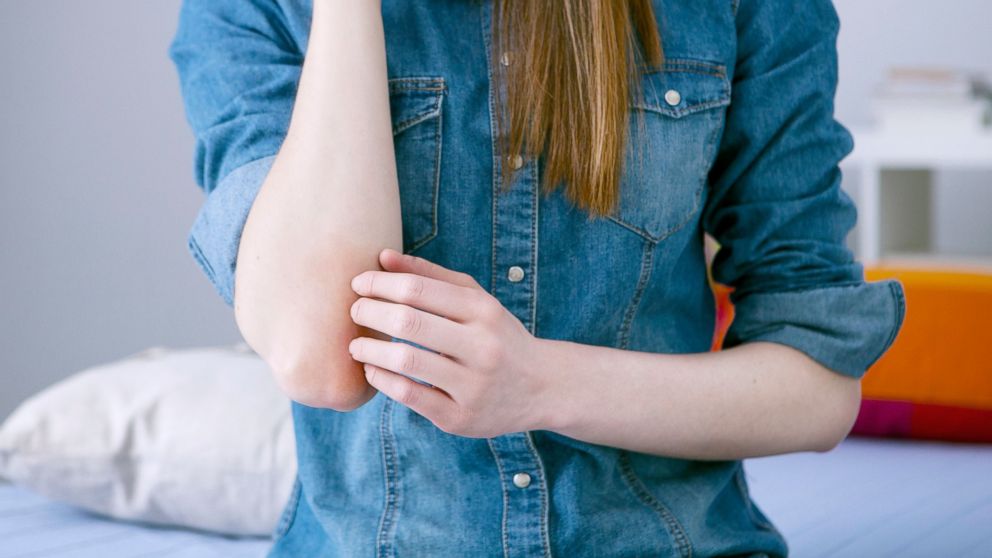Rare Genetic Mutation Pinpointed as Cause of Vibration-Induced Hives
Scientists found genetic mutation in families with rare condition.

— -- When a person breaks out into hives, the annoying rash is usually blamed on skin care products, new foods we’ve eaten, or cute animals we’ve touched. But some people get hives from something much more unusual: vibration.
These folks suffer from a condition called “vibratory urticaria,” and they can break out into hives from activities like running, hand clapping, snoring, towel drying, or even bumpy bus rides. Researchers released new information today that could help unlock why some people develop this rare allergy.
Scientists have pinpointed a specific mutation in the ADGRE2 gene that runs in some families with this rare disorder, according to researchers at the National Institutes of Health who published findings today in the New England Journal of Medicine.
All of the families originate from a small area in Lebanon, suggesting common ancestors, the findings show.
Hives occur when immune system cells called mast cells release the chemical histamine, usually as an allergic response. The release of histamine brings on the red, itchy and bumpy hives.
Mast cells usually release histamine when allergic signals come from the immune system, but this research suggests that the hive-causing cells are sensitive to physical vibration as well.
Even people without vibratory urticaria release some histamine in response to vibration, according to the lead investigator in the study, Dr. Hirsh Komarow of the NIH Laboratory of Allergic Disease. However, in that case it isn’t strong enough to be noticeable or cause hives. For those with the disease, the reaction to vibration is much stronger. The hives develop within a few minutes of the vibration and usually subside within an hour.
“It’s more of an annoyance,” Komarow said of the condition in the families they studied. “Since they have it since birth and since other family members have it, they accept it as the standard and there are certain things you don’t do. It’s not so bad because your brothers and uncles and niece don’t do it either.”
This discovery doesn’t mean that every person with the condition will have this same genetic mutation, but it sheds new light on how this disease can be passed on through generations. This research may help scientists learn more about how mast cells function in the skin and deepen their knowledge of how allergic reactions work.
Dr. Hugh Sampson, director of the Jaffe Food Allergy Institute at the Icahn School of Medicine at Mount Sinai, explains that this research could help doctors work with the small group of patients suffering from this disease, where the exact genetic mutation remains unknown.
“You know there has to be a physiologic reason behind it but nobody has found it,” he said of similar conditions. “This is great.”
Sampson said he has only had one patient develop the disease, which appeared after he started playing the trumpet and the instrument’s vibrations caused hives.
But it wasn’t all bad. “He hated playing the trumpet, so it was a huge relief to him not to have to play anymore,” Sampson said.
Dr. Linda Drozdowicz is a resident in the ABC News Medical Unit.